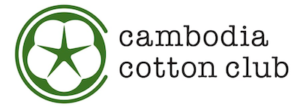Toxic chemical residues were also found in children's clothing from luxury brands, an investigative report by an international environmental group revealed in January of this year.
・Burberry
・Disney
・Uniqlo
・Adidas
・American Apparel
・C&A
・GAP
・H&M
・Li-Ning
・Nike
・Primark
・Puma
Although the amounts and ingredients detected differed, all 12 manufacturers listed above were found to have toxic chemicals.
The reality seems to be that toxic chemicals are used and remain in the manufacturing process of children's clothing as well as clothing for adults.
To give an example, Adidas swimwear contained residues of perfluorooctanoic acid above the company's established limit of use.
Nonylphenol ethoxylate was also detected in all brands.
High concentrations of nonylphenol ethoxylate were detected in unannounced samples of in-store merchandise from Disney, American Apparel, and Burberry, the research report noted.
Perfluorooctanoic acid and nonylphenol ethoxylate contain endocrine disruptors (environmental hormones) that are carcinogenic, developmentally disordered, and affect human hormone action.
In a sample of 10 polyester, pol ester and cotton blend garments, antimony was detected in 9 garments and 2 garments were found to contain high levels of titanic acid ester.
Antimony compounds are irritating to the skin and can cause poisoning symptoms such as hair loss and scaly skin. Scaling is a scaly condition.
Titanic acid ester is a substance that adversely affects the reproductive function of the human body.
These are chemicals that are not easily biodegradable in nature. Once discharged from a factory, they remain in the environment for a long period of time.
Biodegradation, very roughly explained, is the process by which a substance is repeatedly eaten by microorganisms living in the soil or near water by microorganisms in the natural world, which continue to reduce harmful chemicals that are high molecular weight compounds (huge molecules with molecular weights of 10,000 or more) to smaller and smaller molecules on a molecular level, thus making them nearly harmless.
The table above includes not only low-priced brands, but also high-end brands. Apparently, buying overpriced children's clothing does not mean that it is safe.
How did this come about? What types of garments are included? I will read a little more into the survey report.
( to be continued )
